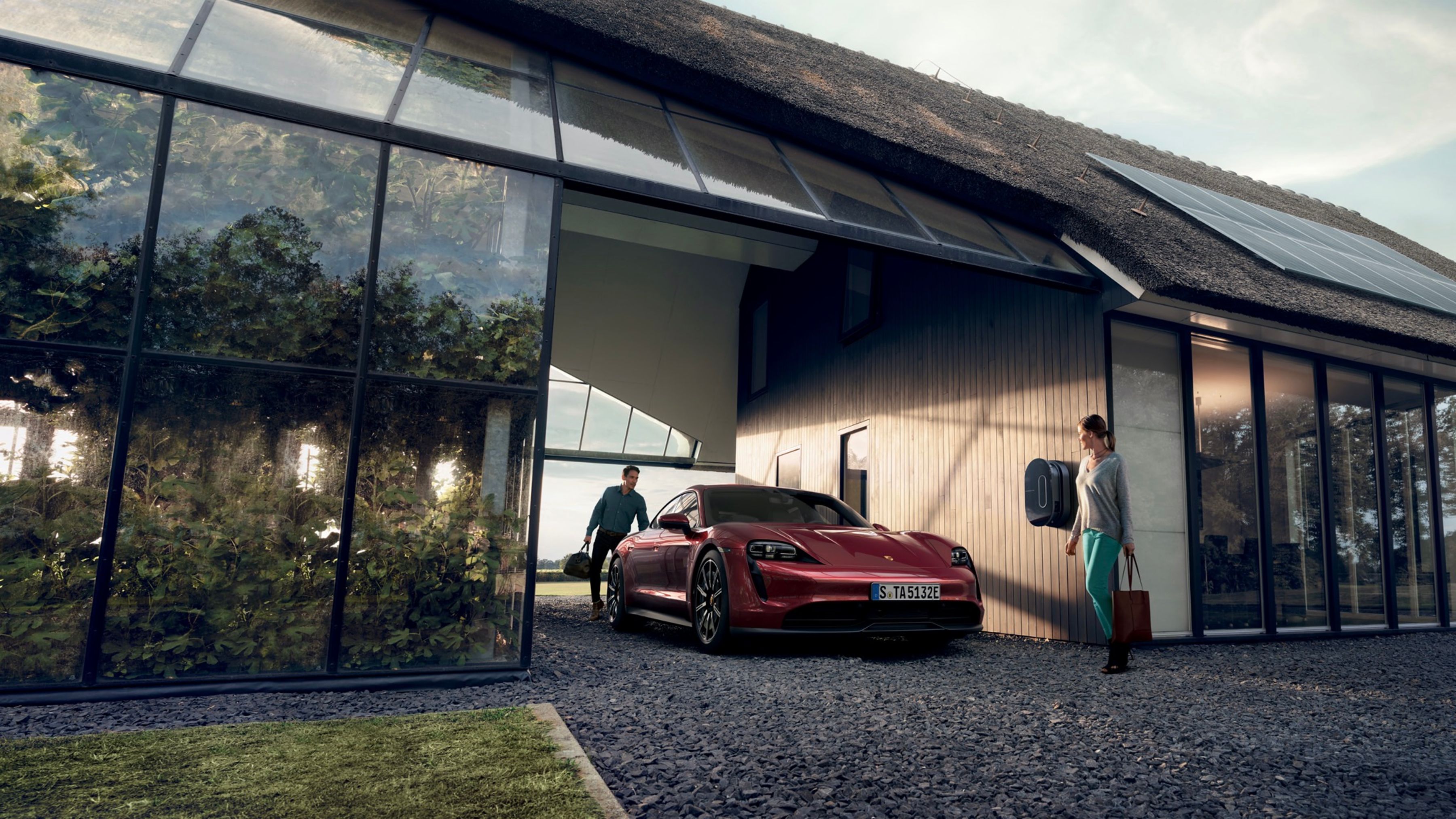More convenient charging and shorter travel times
The future of electromobility at Porsche
The future of electromobility at Porsche

When it launches in 2023, the all-electric Macan will be the first Porsche on the Volkswagen Group’s Premium Platform Electric (PPE). Like the Taycan, it will be the sportiest vehicle in its segment and will feature 800-volt technology. Long-range capability, high-performance fast charging and reproducible best-in-class driving performance figures are the key development goals. Special attention has been paid to overall efficiency: low drag is fundamental in maximising the range of the all-electric Macan. Testing with prototypes in a real-world environment is currently underway. Charging and conditioning the high-voltage battery are key disciplines here.
Porsche is also researching and developing the following battery technology topics over various timescales.


The philosophy at Porsche is to base battery capacity on the actual needs of customers and not to compete for range records. That’s because smaller batteries weigh less, require fewer raw materials and less energy in production, and leave a correspondingly smaller CO2 footprint.

In addition to the network of the IONITY joint venture, Porsche is planning to set up its own fast-charging stations along the most important transport routes in Europe. These will offer customers a high-quality, brand-appropriate charging experience. The special character of the Porsche fast-charging stations will be underlined with a unique design. Each station will have between six and 12 charging points with a capacity of at least 350 kW. The charging process will be easy to start. For a pleasant stay, there will be a lounge area with innovative self-service facilities. Access will be controlled by smartphone or RFID card.

Porsche is systematically accumulating expertise in cell chemistry for high-performance batteries. By changing the cell chemistry from graphite to silicon anodes, the cell systems meet the extreme requirements of high-performance use. Theoretically, silicon can store 10 times more lithium ions than graphite. This high silicon content means the anode can have a smaller volume than the previous graphite anodes. Consequently, the volume of the cell can be reduced by up to 40 per cent, or the energy content can be increased with the same volume. The thinner silicon anodes reduce the internal resistance by around 25 per cent, which benefits the recuperation capability that is so important in motorsport. Porsche is working on establishing a completely European production chain for high-performance batteries. The new Porsche subsidiary, Cellforce, based in Tübingen, is planning to build a plant in south-west Germany. Another approach in cell development is to significantly increase the nickel content in cathodes.
QuantumScape, a California-based partner company of Volkswagen AG, is developing battery cells where the conventional separator of the two electrodes, a microporous plastic, is replaced by a solid ceramic material. Instead of the previous anodes made of graphite or a graphite-silicon composite material, an anode made of purely metallic lithium can be used. The volumetric energy density can therefore be increased by around 40 per cent to 1,000 Wh/L compared to good conventional cells. At the same time, these solid-state batteries are more thermally insensitive, can be used at temperatures as low as minus 30°C, and can be charged to 80 per cent of their maximum capacity in about 15 minutes.
The charging ecosystem does not end with the charging infrastructure for electric vehicles, but extends beyond the home to include the local grid and energy operators. This means interconnection and central control of the charging process up to the energy supplier and grid operator are crucial. Here is an overview of some aspects to consider:

In future, when electric cars are not being driven, they could also feed energy back into the public power grid. As part of a wider pool of vehicles, they could effectively act as a power plant and help supply what is known as balancing power – electrical power that balances out fluctuations in the power grid.
A realistic pilot test conducted by Porsche, the grid operator TransnetBW and consulting firm Intelligent Energy System Services (IE2S), has demonstrated that electrical balancing power can be stored in the high-voltage batteries of an intelligent swarm of electric cars. Five series-production Taycan were connected to the power grid via the Porsche Home Energy Manager (HEM) both in a domestic environment and under laboratory conditions. Experts from Porsche Engineering had already adapted the software of these control centres beforehand for the field test.
